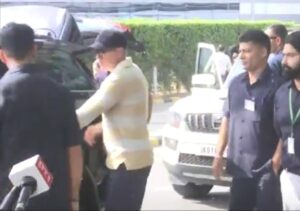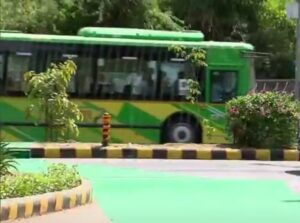CM Omar Abdullah braved challenging conditions to personally assess the catastrophic aftermath of flash floods and landslides that struck Maroog in Ramban district

CSrinagar, April 21, 2025: Jammu and Kashmir Chief Minister Omar Abdullah braved challenging conditions to personally assess the catastrophic aftermath of flash floods and landslides that struck Maroog in Ramban district on April 20, 2025. The natural disaster, triggered by cloudbursts and heavy rainfall, claimed three lives, damaged over 200 houses, and disrupted the strategic Jammu-Srinagar National Highway, leaving scores of residents displaced and infrastructure in ruins.

Abdullah, determined to evaluate the situation firsthand, had initially planned to visit the affected areas on Sunday but was grounded by inclement weather that halted helicopter operations. Undeterred, he embarked on a road journey after receiving confirmation that the Banihal stretch of the highway had been cleared. Arriving in Maroog around 5:30 PM on Monday, the Chief Minister trekked on foot to the worst-hit zones, where he witnessed the “deeply distressing” scale of destruction.

“The devastation here is heart-wrenching. Homes, shops, and livelihoods have been swept away overnight,” Abdullah said, addressing local residents and media. “Our administration is working round-the-clock to provide immediate relief, medical aid, and temporary shelter to those affected. We stand with every family in this hour of grief.”

The flash floods, caused by a cloudburst in Seri Bagna village, claimed the lives of brothers Aqib Ahmad (14), Mohd Saqib (9), and their neighbor Mohan Singh (75). In Dharamkund village, approximately 40 houses were damaged, with 10 completely destroyed, and several vehicles were swept away by overflowing streams. The Jammu-Srinagar National Highway remains blocked at multiple points, including Panthyal, Seri, and Kishtwari Pathar, stranding hundreds of commuters.
Abdullah’s visit underscored the government’s commitment to swift action. Accompanied by local officials, he reviewed ongoing rescue and relief operations, which have evacuated nearly 500 people from low-lying areas to safer locations. “The priority is to save lives and restore normalcy. I will be chairing a meeting later today to finalize restoration, relief, and rehabilitation plans,” he stated, urging citizens to follow travel advisories and avoid vulnerable areas.
Local residents, grappling with the loss of homes and businesses, expressed anguish but found solace in the Chief Minister’s presence. “I lost my two shops in the floods. Seeing the CM here gives us hope that the government will help us rebuild,” said Ravi Kumar, a shopkeeper from Ramban.
Deputy Chief Minister Surinder Choudhary, who visited the affected areas on Sunday, assured comprehensive support. “We are preparing a detailed report for the Chief Minister to ensure adequate compensation for those impacted,” he said, flanked by National Conference MLAs Arjun Singh Raju and Sajad Shaheen.
Lieutenant Governor Manoj Sinha and Union Minister Jitendra Singh also expressed condolences, praising the district administration’s prompt response under Deputy Commissioner Baseer-ul-Haq Chaudhary. Singh noted that the Indian Army has set up medical camps and distributed essential supplies, reinforcing relief efforts.
The Ramban administration has closed all schools, colleges, and technical institutions on April 21 as a precautionary measure, with the weather department predicting improved conditions from Tuesday. The government has promised a detailed damage assessment to facilitate financial aid, with National Conference leader Farooq Abdullah advocating for central assistance to support the affected families.
As restoration work continues on a war footing, CM Abdullah’s hands-on approach in Maroog has reaffirmed the administration’s resolve to rebuild and rehabilitate the flood-ravaged communities of Ramban.





